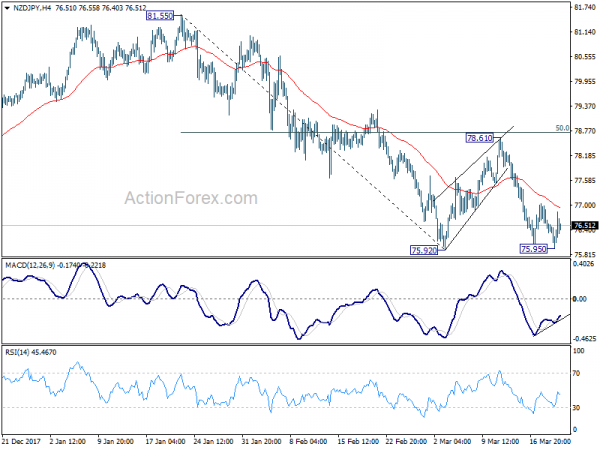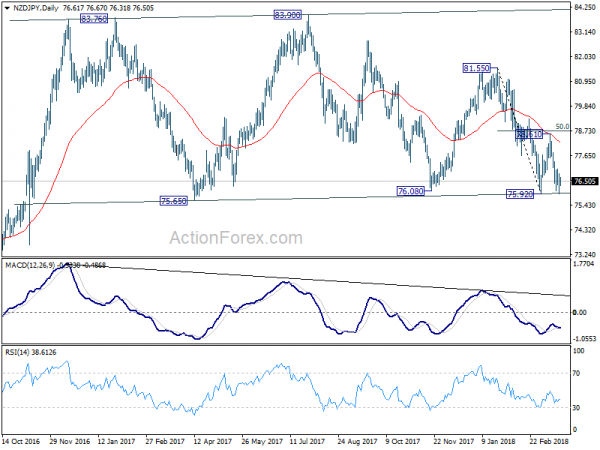NZD is relatively steady after RBNZ kept OCR unchanged at 1.75% as widely expected, and maintained a dovish stance. Outgoing Acting Governor Grant Spencer gave an interview before handing over to Adrian Orr. He noted that RBNZ shouldn’t comment on NZD’s exchange rate. And, he emphasized that “we should only comment on the currency if it’s really pretty clear that it’s out of alignment and you’re wanting to have some impact, some sort of jaw-boning effect”. Though, he acknowledged that “in the past we have got into this situation where we sort of had to make a statement about the currency and if we didn’t the market was going to react.” But then, he also said that NZD is “in the vicinity of fair value”.
In the accompany statement, RBNZ maintained that “monetary policy will remain accommodative for a considerable period.” It said, “inflation is expected to weaken further in the near term”, before heading up to 2% target “over the medium term”. And, “tradeable inflation is projected to remain subdued through the forecast period.” At the same time, “non-tradables inflation is moderate but is expected to increase in line with a rise in capacity pressure.” Regarding the economy, “growth is expected to strengthen, supported by accommodative monetary policy, a high terms of trade, government spending and population growth.”
NZD/JPY’s recovery from 75.59, with mild bullish convergence condition in 4 hour MACD, suggest that immediate threat of breaking 75.92 is over. NZD/JPY’s near term outlook is rather mixed as momentum is clearly bearish. As it’s held comfortably below falling 55 day EMA. But at the time time, 75.65/76.08 is a very important long term support zone. For now, there is little reason for sustainable rebound. But NZD/JPY bears will take more time and stimulus to take out this 75.65/76.08 support zone. So, range trading is likely the way to go.















